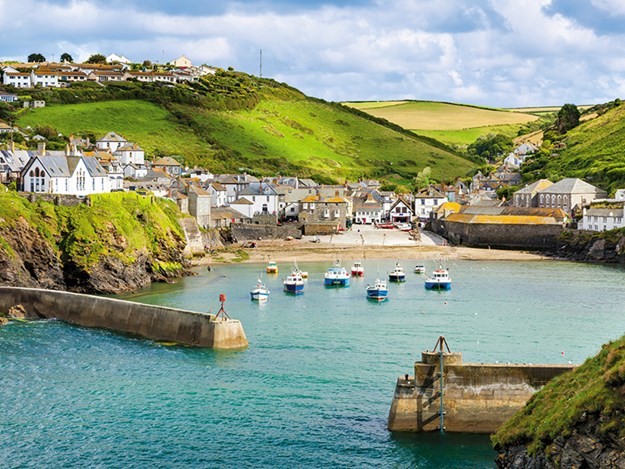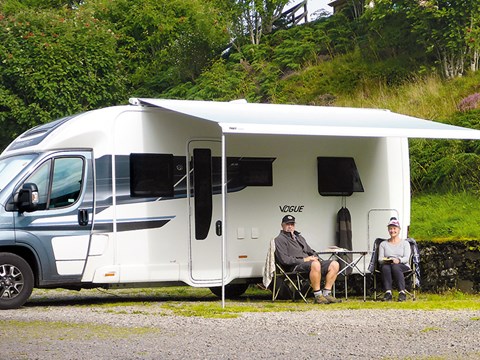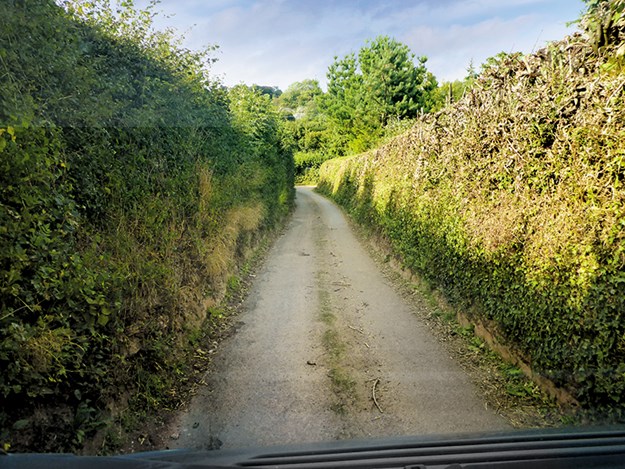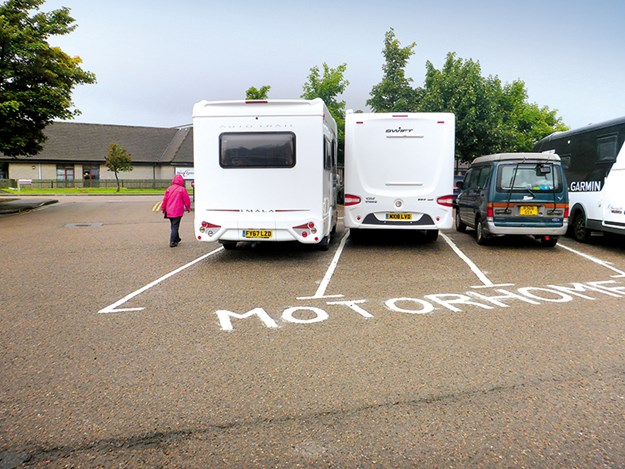 |
Port Isaac in Cornwall, where the Doc Martin TV series was filmed |
Paraparaumu couple Deanne and Trevor Moss bought a new motorhome in the UK and spent three months travelling through Scotland, England and Wales. The motorhome followed them home when they returned to New Zealand. Hopefully, in the not-too-distant future, it’s something other motorhomers will be able to do. Here they tell MCD why they chose to import their motorhome this way, and how it all went.
What was your previous RV experience?
We had owned an ex-Maui Mercedes Sprinter 4-berth campervan which we sold in 2014, and we knew we enjoyed motorhoming. Deanne had immigrated from Guernsey to New Zealand in 1970 and wanted to go back for a better look around. We decided our best option was to buy a motorhome when we got there, travel in it for three months and then export it home. That way, the motorhome’s value would depreciate and the GST requirement in New Zealand would be less. It worked out cheaper to buy in the UK, which gave us more to spend on travelling. Even with transport and import duties, the all-up cost made it a viable three months.
How did you go about this?
Early in 2018 we contacted Kiwi Motorhome Importing in Tauranga to find out the feasibility of buying and importing a motorhome in this way. The company is run by Rob and Fiona Wilkinson and their expertise relieved us of a lot of stress and hassle. They asked us what we wanted and then put us in touch with Spinney Ltd in Cheshire. They are a family-run motorhome Swift dealership and exporter with extensive knowledge and experience of exporting to New Zealand and Australia.
 |
Savouring some warmth in Oban Scotland |
What vehicle did you decide on?
The people at Spinney suggested the new model Swift Vogue 694 Fiat, weighing 3500kg and measuring 7.5 metres in length, would not only fit our requirements but had a payload that would allow us to drive it within UK regulations on our New Zealand driving licences. The south of England is particularly full of narrow lanes so the size of the campervan was an important consideration. We bought it sight unseen so it would be ready when we got there, but we were able to examine all aspects on the internet and were confident it was what we wanted.
What criteria were most important for your decision?
We were in a position to know the things that were important to us because of our previous motorhoming experience. Firstly, we wanted a low-profile, four to six-berth model we could both drive. Another important consideration was a permanent island bed (we’d had to make up the bed daily in our first motorhome). We also wanted the home door to be on the left-hand side of the vehicle.
Were there any difficulties buying and setting up the motorhome?
Not really. There was one anxious moment when we were having a cup of tea at Spinney’s and a staffer rushed in to announce that there had been an accident involving our brand-new motorhome. A car had backed into it in the yard. Luckily, there was so little damage it was not worth worrying about. The handover was thorough and a few of the cupboard latches that didn’t work properly were fixed. Of course, we had to kit it out and set it up from scratch, although we had brought linen and towels with us. Fortunately, we had relations not too far away and we stayed there while we got organised.
 |
England’s narrow country lanes make size a key consideration when choosing a motorhome for travel in the UK |
After your purchases, how did you prepare for your journey?
We joined the National Trust, which reduced the entry cost to stately homes and castles, and we soon recouped the subscription that we had paid. We joined the Caravan and Motorhome Club. There are mainly two types of campsites in England and Scotland: club sites, which have all the bells and whistles; and certificated locations (CLs). We mostly used the CL sites; often on a farm, they are privately owned with up to five sites on the one piece of land. These were cheaper but might not have Wi-Fi or shower and laundry facilities. We phoned ahead to be sure we had somewhere to stay each night as it is almost impossible to freedom camp. The Park ‘n’ Ride system in England was useful. You parked outside a township or city and caught a bus to the centre. It was not expensive and saved negotiating narrow streets and finding parking spaces.
 |
Tight parking at Fort William in Scotland |
Where did you go?
We took three months to travel first to Scotland because it was outside the summer school holidays there. We started at John o’ Groats and travelled south to the Isle of Skye and Isle of Raasay, through the Lake District, the Yorkshire Dales and down to Land’s End. We then drove up the rugged west coast of England, along the north coast of Wales and south-east to Cheshire to drop off the campervan for shipping home.
How did that go, the drop-off and shipping?
We parked at our relatives' place nearby to unload and divest ourselves of things we no longer needed. We thoroughly cleaned the motorhome, insect-bombed it and then delivered it to Spinney’s who drove it to Southampton to be loaded on a cargo ship. There were no dramas until the ship tried to dock in Auckland just before we were due to arrive home and was prevented from doing so because there were stowaways on board – horticultural pests known as brown marmorated stink bugs. The ship had to remain at sea until any eggs had hatched and the bug babies exterminated. For us, that meant that instead of the motorhome arriving in six weeks it took four months.
Did the whole exercise work out the way you expected, and would you recommend it to others?
Apart from delay in receiving it, yes everything worked well. We think it is much easier to work through an experienced importing company. There are so many traps and so much paperwork. Kiwi Importing and Spinney’s advised us and dealt with any issues that came up – for example with warranties, tax, conversions, payload requirements, compliance and insurances. Would we do it all again if we had the chance? Definitely.





